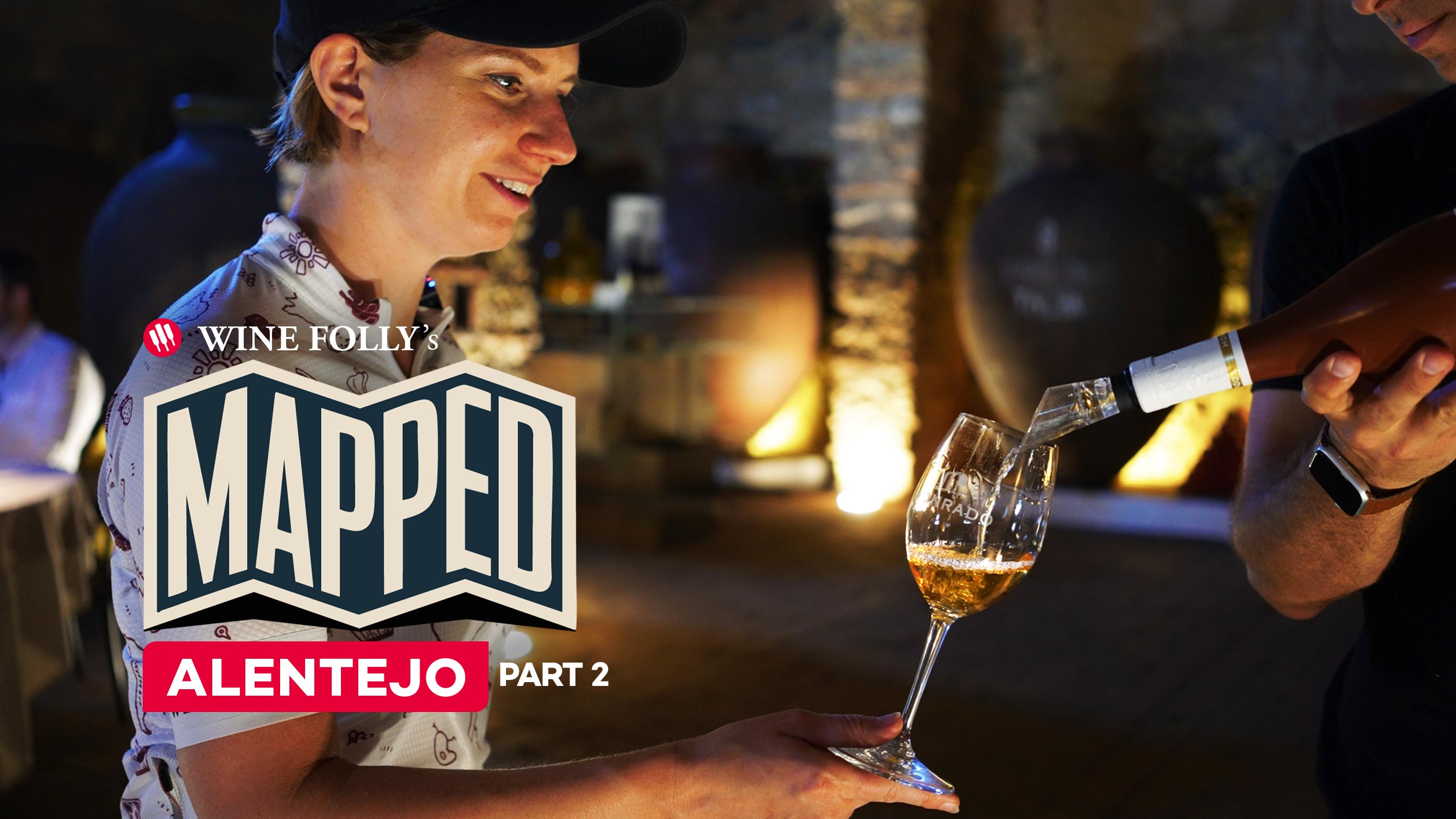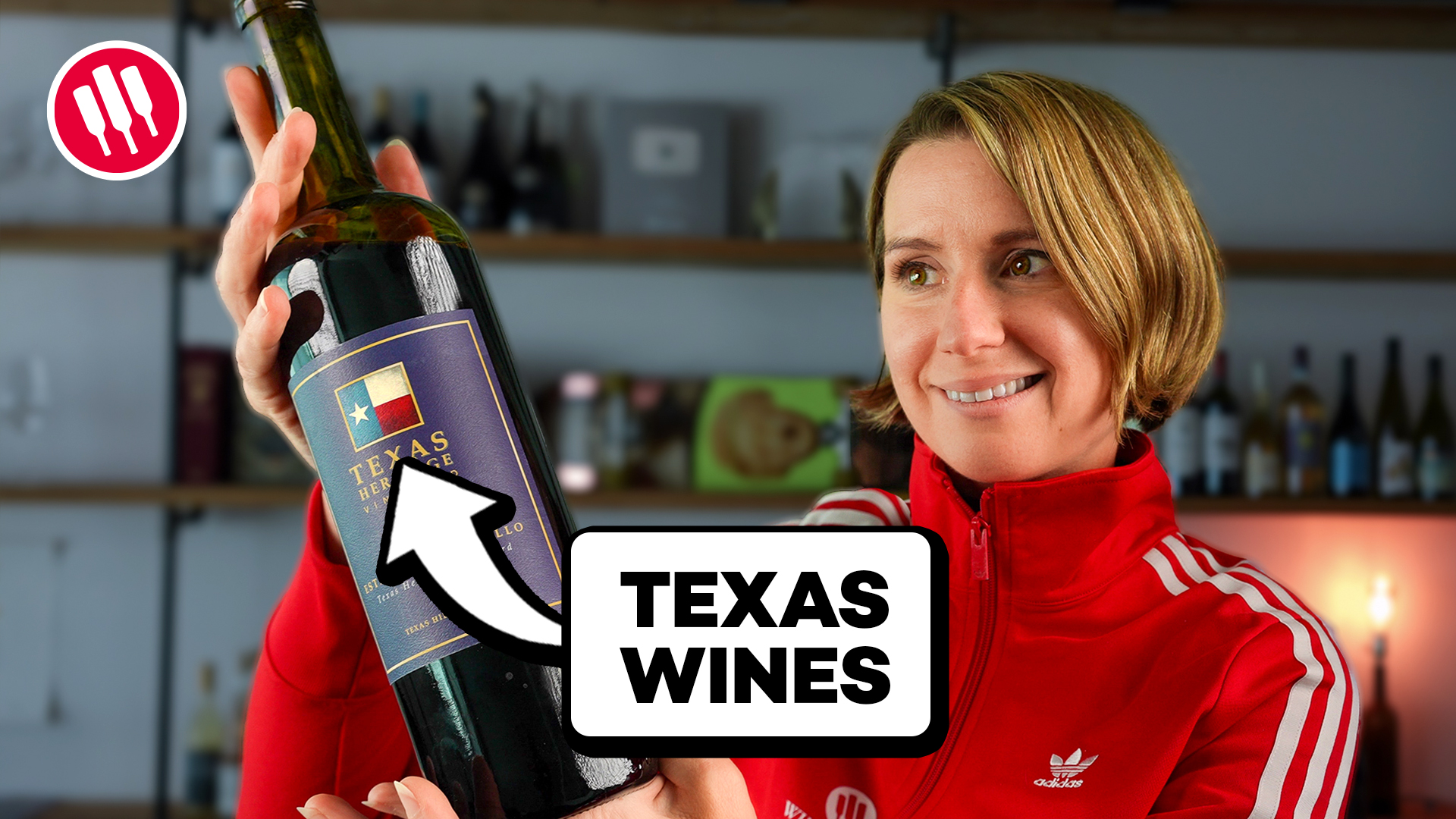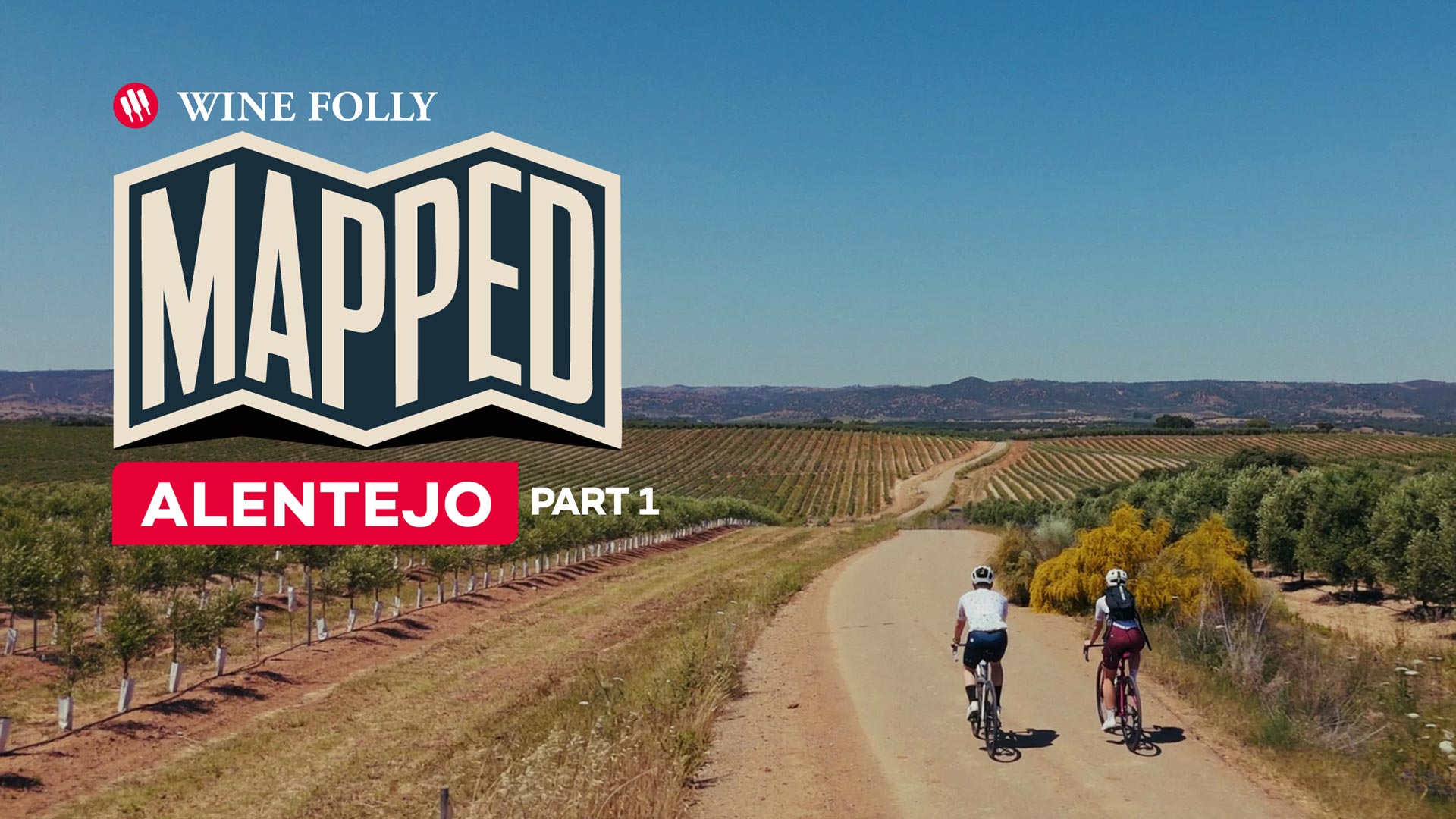Can You Taste Stone in Your Wine? (Blind Tasting in Alentejo)
Alentejo, Portugal, is a land of extremes: scorching summers, wild cork forests, ancient dolmens, and wines so dark they look like ink in the glass. On a recent trip, Wine Folly set out to answer a quirky but important question: Can you actually taste stone in wine? Specifically—marble stone.
The Marble Mystery
Alentejo is famous for its marble industry, especially around Estremoz and Borba. You’ll find marble castles, marble quarries, even marble-paved streets. But vineyards? Yes, some of the region’s vines grow directly out of marble-based soils. And those soils don’t just look dramatic—they affect the taste of the wines.
How Marble Soils Shape Wine
Marble may be tough as stone, but in the vineyard it does delicate work:
Heat Absorption: Marble soaks up the day’s warmth and radiates it back at night, nudging grapes toward ripeness.
Drainage: Like gravel, marble drains fast, limiting water retention and stressing vines in a good way. The result? Grapes with more aromatic intensity.
Structure: Wines from marble soils often show lighter body, fresher acidity, and softer tannins compared to their clay-soil cousins.
Side by side, clay-based wines tend to be darker, bolder, and richer, while marble-soil wines lean perfumed, lifted, and bright.
The Blind Tasting Challenge
To test this out, Wine Folly staged a blind tasting. One wine was made from vines rooted in marble soils, the other from grapes fermented in a traditional marble lagar (tank). Both were deep Alicante Bouschet reds — Alentejo’s calling card grape.
The clues? Color, aromatics, and body. The marble-soil wine was slightly lighter in hue, more aromatic, and carried a zippy freshness. The clay/lagar wine was richer, denser, and more brooding. The guess? Nailed it. Marble, it turns out, does leave a fingerprint.
Cork Forests: Alentejo’s Other Gift
Of course, Alentejo’s wines aren’t just about marble. The region is also home to vast Montado cork forests; UNESCO cultural landscapes that supply most of the world’s cork stoppers. These trees are harvested only once every 9–12 years, and their presence has shaped Portugal’s role in global wine culture for centuries. Together with marble soils, cork forests remind us that Alentejo’s land is inseparable from its wines.
Final Sip
So, can you taste stone in wine? In Alentejo, the answer is yes. Marble soils bring freshness and perfume to wines otherwise known for their dark, bold character. Pair that with cork forests safeguarding biodiversity, and you get a region where both bark and stone play a starring role in every glass.
Wines Mentioned

Herdade do Mouchão
2017 Mouchão Tinto
Alentejo | Portugal
It's the estate's flagship wine since the first harvest was bottled in 1949, reflecting the winery's unique temperament.
The palate is dense, with firm but fine tannins, with layers of fruit, mint, and tobacco lending to the frank acidity, length, and longevity.
Its unique tannin structure enhances long bottle aging, and can improve significantly with cellaring for two decades, or even longer.

Herdade do Mouchão
2023 Ponte Mouchão Branco
Alentejo | Portugal
Born in the recovery of a story lost in time.
This is a delicate, vibrant wine with balance and freshness, with barely perceptible wood notes, full-bodied, and with sufficient concentration to suggest its provenance from the oldest vines in the Barragem and Mouchão Velho vineyards. Interestingly, the DOC system has not yet revived the variety's centuries-old tradition in the Alentejo, hence the use of the Vinho Regional Alentejano classification.

Herdade do Mouchão
2013 Mouchão Tonel No. 3-4 Tinto
Alentejo | Portugal
It is probably the most emblematic expression of the Alicante Bouschet grape variety in all its fullness and its great aging potential.
Its structured and exuberant tannins guarantee a unique longevity.

João Portugal Ramos
2019 Estremus
Alentejo | Portugal
The attack is smooth, followed by an evolution characterized by harmonious acidity, volume, and structure, giving it a long, persistent, and highly elegant finish.

Dona Maria
2018 Júlio B. Bastos Alicante Bouschet
Alentejo | Portugal
This wine from selected grapes of old Alicante Bouschet vines, dedicated to my father.
Silky and intense finish with round, matured tannins.

Quinta Cabeças do Reguengo
2022 Solstício Tinto Biológico
Alentejo | Portugal
Made from old grape varieties from a very old vineyard.

Quinta Cabeças do Reguengo
2023 Respiro Altitude Branco
Alentejo | Portugal
Field plot of three centenary vineyards.
Related Videos

The Clay Revolution in Alentejo

Guide to Texas Hill Country Wine
